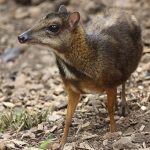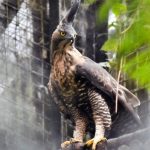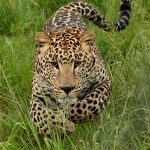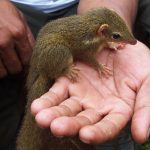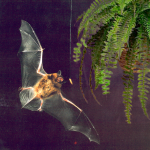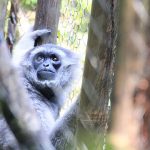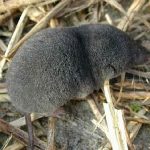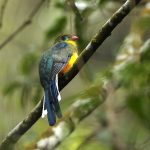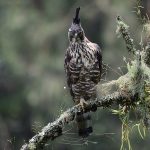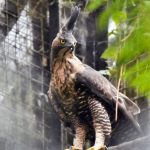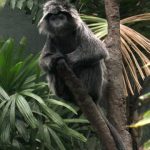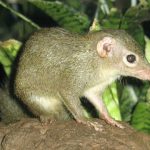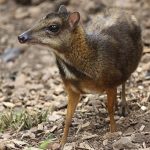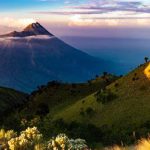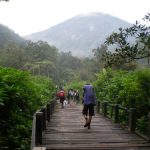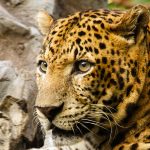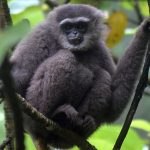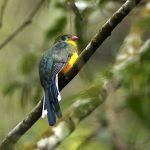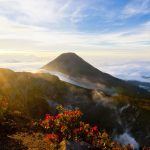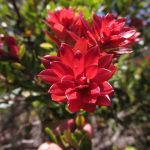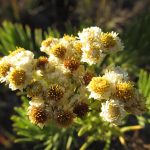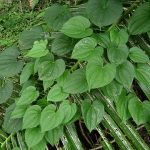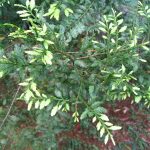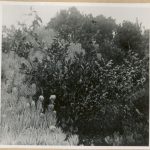Gunung Gede Pangrango
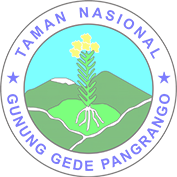 Gunung Gede Pangrango, Mount Gede Pangrango National Park is a national park in West Java, Indonesia. The park is centred on two volcanoes—Mount Gede and Mount Pangrango—and is 150 km² in area.
Gunung Gede Pangrango, Mount Gede Pangrango National Park is a national park in West Java, Indonesia. The park is centred on two volcanoes—Mount Gede and Mount Pangrango—and is 150 km² in area.
It evolved from already existing conservation areas, such as Cibodas Botanical Gardens, Cimungkat Nature Reserve, Situgunung Recreational Park and Mount Gede Pangrango Nature Reserve, and has been the site of important biological and conservation research over the last century. In 1977 UNESCO declared it part of the World Network of Biosphere Reserves.
 Topography and Ecology
Topography and Ecology
Mount Gede (2,958 m) and Pangrango (3,019 m) are twin volcanoes. The two summits are connected by a high saddle known as Kandang Badak (2,400 m). The mountain slopes are very steep and are cut into rapidly flowing stream, which carve deep valleys and long ridges.
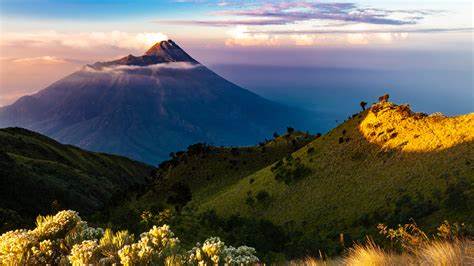 Lower and upper montane and subalpine forests are within the park and have been well studied.
Lower and upper montane and subalpine forests are within the park and have been well studied.
To the north of Mount Gede is a field of Javanese Edelweiss (Anaphalis javanica). The park contains a large number of species known to occur only within its boundaries, however, this may be a result of the disproportionate amount of research over many years.
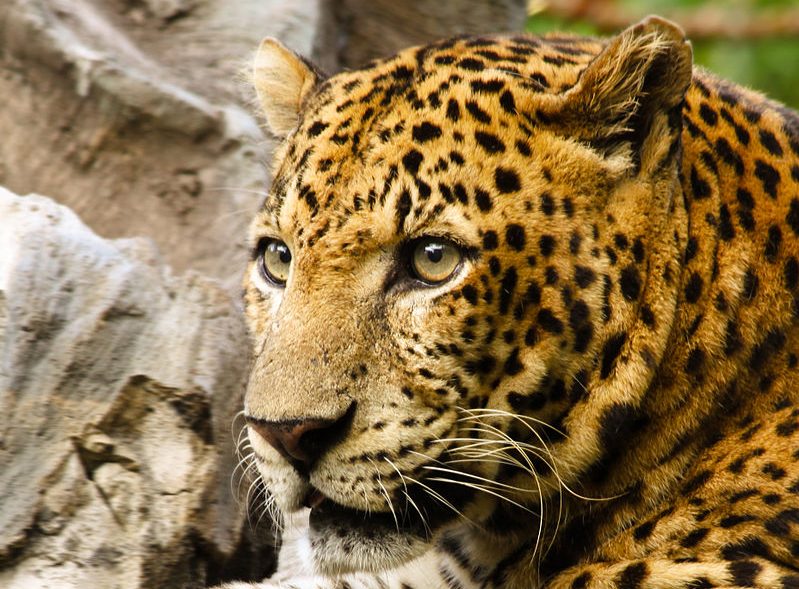 Biodiversiy
Biodiversiy
The specialty of this National Park is its biodiversity. This is what attracts many experts and researchers to visit the Gede-Pangrango area. Thunberg even made a botanical study of the area in 1777. Blume climbed to the top of Gede in 1824, taking for the first time the trail now known as the Cibodas Trail, and stopping at Cibeureum.
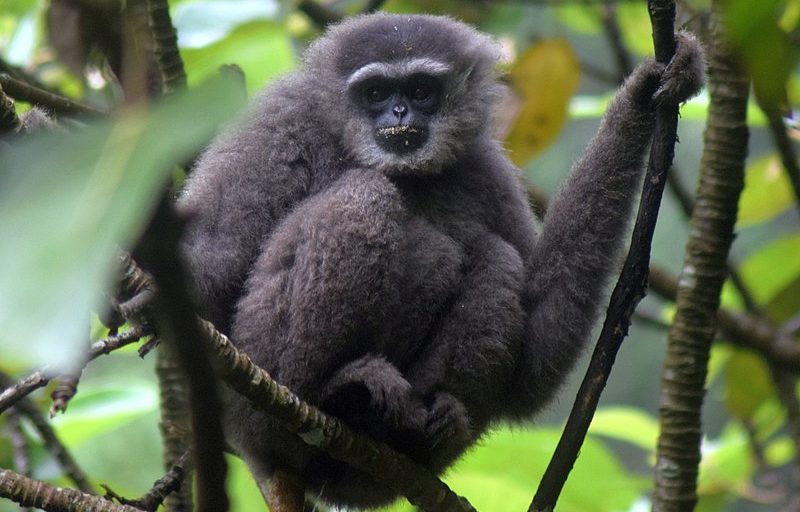 Wallace then followed this path, when he visited the region in the rainy season of 1861 to collect birds and insects,.
Wallace then followed this path, when he visited the region in the rainy season of 1861 to collect birds and insects,.
Gunung Gede-Pangrango is inhabited by 251 of the 450 bird species found in Java. Among these are endangered species like the Javan hawk-eagle and the Javan scops owl.
Among the endangered mammal species in the Park there are several primates such as the silvery gibbon, Javan surili and Javan lutung. Other mammals include Javan leopard, leopard cat, Indian muntjac, Java mouse-deer, Sumatran dhole, Malayan porcupine, Sunda stink badger, yellow-throated marten, and Bartels’s rat.
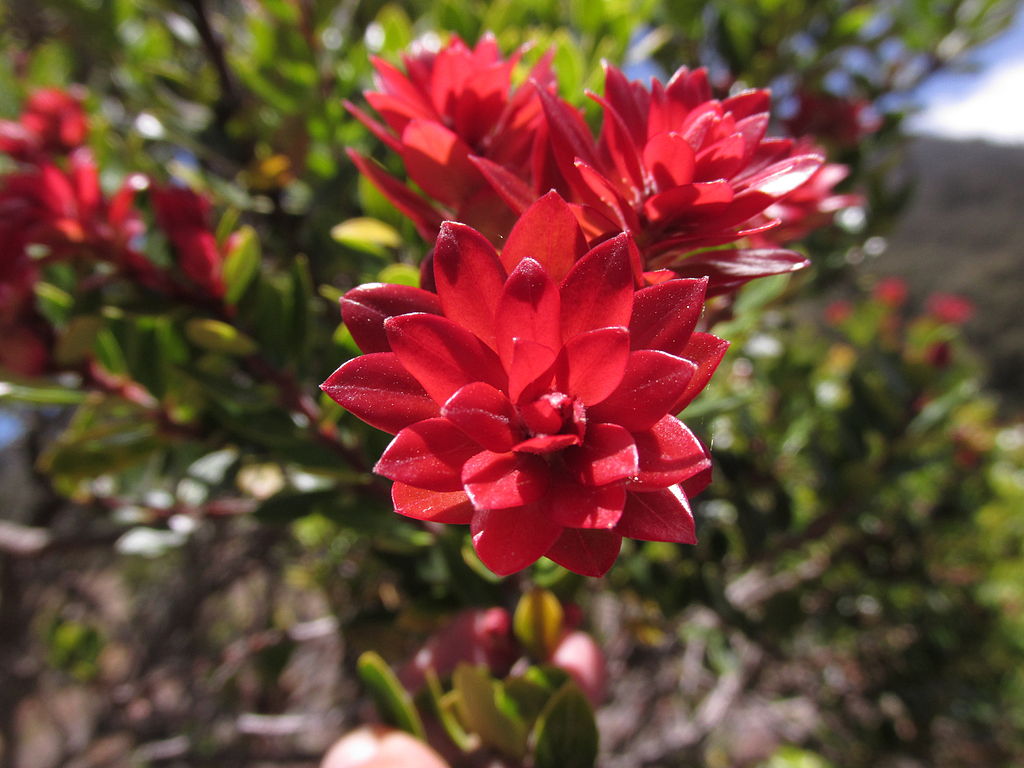 Flora
Flora
This national park is known for its rich mountain forest flora. In the entire area of CA Cibodas-Gede (part of the National Park), at an altitude of 1,500 m above sea level to the peaks of Gede and Pangrango, no less than 870 species of flowering plants and 150 species of ferns were recorded. The types of orchids recorded up to 200 species throughout the National Park.
 Of the 68 rare mountain plant species that are only known to exist in one mountain in Java, 9 of them are recorded only from Mount Gede, and 6 of the 9 species are endemic to Java.
Of the 68 rare mountain plant species that are only known to exist in one mountain in Java, 9 of them are recorded only from Mount Gede, and 6 of the 9 species are endemic to Java.
The type of Javanese edelweiss (Anaphalis javanica) that grows abundantly in Suryakancana Square is very popular among mountain climbers and nature lovers, so it is used as the mascot of this national park.
However, what is endemic to Java and somewhat rare is actually its close relative, Anaphalis maxima; in Taman Nasional Gunung Gede Pangrango, TNGGP only found at Mt. Pangrango near the Kandang Badak. Several other endemic species found in this area, among others, a type of “Ubi” Dioscorea madiunensis; a type of jernang Daemonorops rubra; areca green Pinanga javana; a type of cardamom Amomum pseudofoetens; and many more.
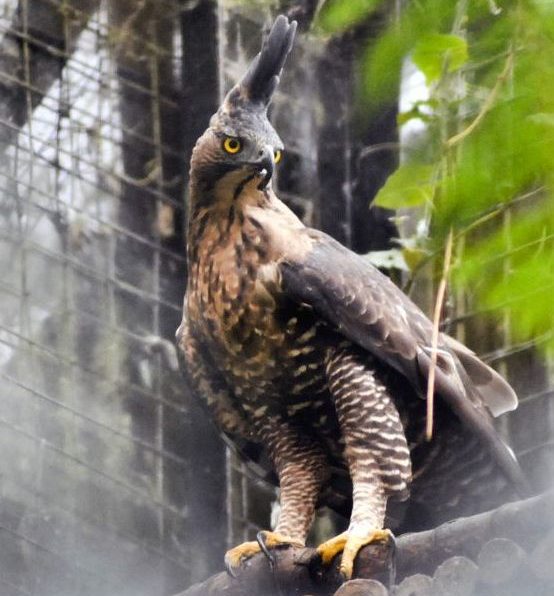 Fauna
Fauna
Gunung Gede Pangrango National Park has a fairly high wealth of animal species, especially in the lower mountain forest zone. Some of the species that are considered rare, endemic or threatened with extinction, among them, are the Javan gibbon (Hylobates moloch), the surili langur (Presbytis comata), the ajag dog (Cuon alpinus), the leopard (Panthera pardus), the biul slentek Melogale orientalis, a type of shrew Mount Crocidura orientalis, bats Glischropus javanus and Otomops formosus, a type of flying squirrel Hylopetes bartelsi, two types of rats Kadarsanomys sodyi and Pithecheir melanurus.
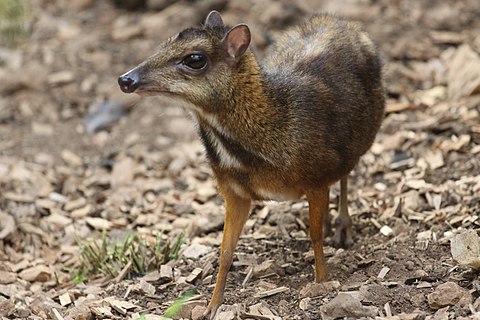 Several types of birds such as the Javan eagle (Spizaetus bartelsi), the hill husky Phodilus badius, the Javan celepuk Otus angelinae, the Caprimulgus pulchellus mountain range, the Collocalia vulcanorum mountain swallow, the woodpecker Kundang Reinwardtipicus validus, the Javan ciung-mungkal Cochoa azurea, the Zoothera andromedae forest anise, and some other species. The rare mountain snake Pseudoxenodon inornatus may also be present here; also some rare amphibian species such as the red frog (Leptophryne borbonica), and the caecilian species Ichthyophis hypocyaneus.
Several types of birds such as the Javan eagle (Spizaetus bartelsi), the hill husky Phodilus badius, the Javan celepuk Otus angelinae, the Caprimulgus pulchellus mountain range, the Collocalia vulcanorum mountain swallow, the woodpecker Kundang Reinwardtipicus validus, the Javan ciung-mungkal Cochoa azurea, the Zoothera andromedae forest anise, and some other species. The rare mountain snake Pseudoxenodon inornatus may also be present here; also some rare amphibian species such as the red frog (Leptophryne borbonica), and the caecilian species Ichthyophis hypocyaneus.
Other animals that are often encountered include the kra monkey (Macaca fascicularis), the budeng langur (Trachypithecus auratus), the skunk badger (Mydaus javanensis), the root squirrel (Tupaia glis), the kekes squirrel (T. javanica), the pig rat (Hylomys suillus), black stingray (Ratufa bicolor), three-striped ground squirrel (Lariscus insignis), Javan squirrel (Tragulus javanicus) and others. Altogether, more than 100 types of mammals and lk. 250 kinds of birds.
